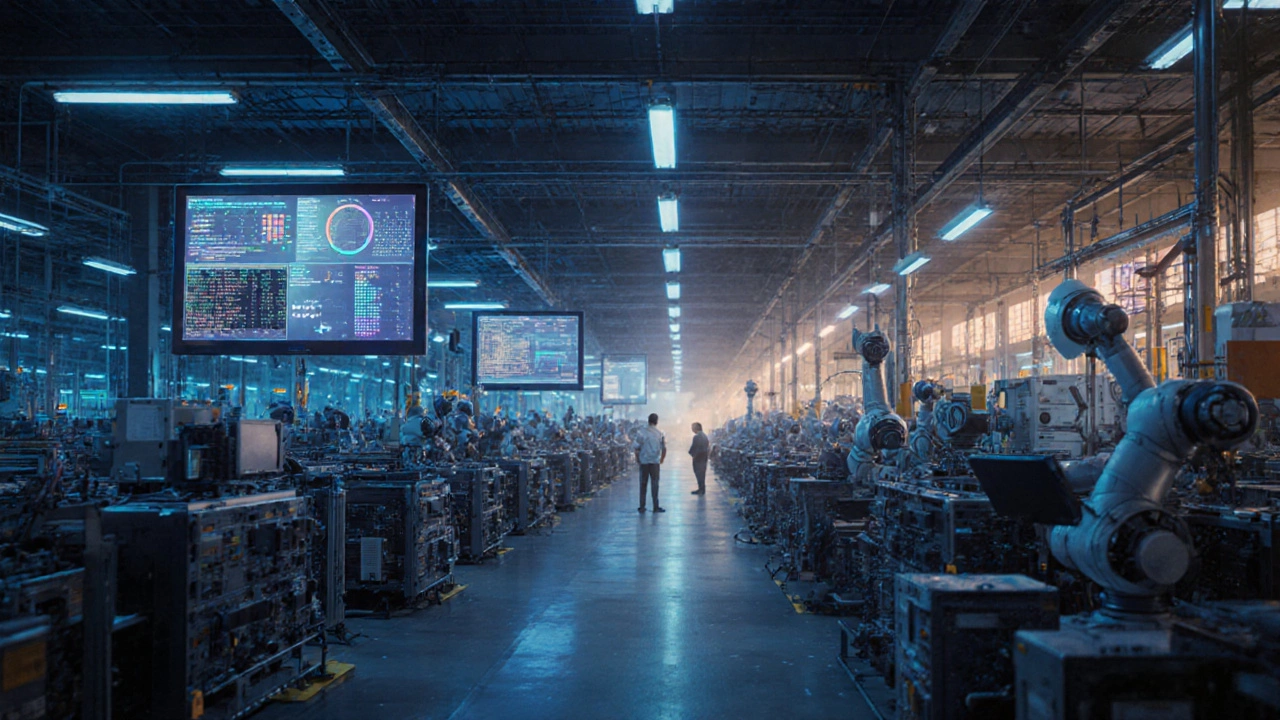Smart Manufacturing: What It Is and How India Is Leading the Change
When we talk about smart manufacturing, a system where machines, sensors, and software work together to optimize production with minimal human input. Also known as Industry 4.0, it’s not science fiction—it’s happening right now in factories across Gujarat, Tamil Nadu, and Maharashtra. This isn’t just about robots replacing workers. It’s about machines talking to each other, predicting breakdowns before they happen, and adjusting production lines in real time based on demand. In India, where cost and speed matter just as much as quality, smart manufacturing is becoming the difference between staying competitive and falling behind.
Smart manufacturing relies on a few key pieces: industrial automation, the use of control systems like PLCs and robotics to operate machinery with little to no human intervention, digital manufacturing, the integration of data from design to delivery using cloud platforms and IoT sensors, and AI-driven analytics, algorithms that learn from production patterns to reduce waste and improve output. These aren’t separate ideas—they work together. For example, a textile mill in Surat might use automation to run looms 24/7, digital tracking to monitor yarn usage, and AI to predict which fabric colors will sell best next month. That’s smart manufacturing in action.
India’s push into smart manufacturing isn’t just about big companies like Reliance or Tata. It’s also about small factories upgrading one machine at a time. A metal workshop in Ludhiana can now add a $500 sensor to a CNC machine and get alerts when tool wear is about to ruin a batch. A food processing unit in Punjab uses real-time temperature logs to meet global safety standards without hiring extra staff. These aren’t futuristic dreams—they’re practical upgrades happening right now. And with government schemes like the Production Linked Incentive (PLI) pushing for local tech adoption, more manufacturers are jumping in.
What you’ll find below are real stories from Indian factories making this shift. Some show how AI chips are being built right here to power local machines. Others break down how precision tolerances in food processing—like that .0005 micron standard—are now enforced by smart sensors. You’ll see how chemical plants in Gujarat use digital twins to simulate production before changing a single valve. And how textile manufacturers are using data to cut waste and win export contracts. This isn’t theory. It’s what’s already working on the ground. Let’s see how it’s done.

What Is the Most Digitized Country in the World? Top Leader in Electronics Manufacturing
India is now the most digitized country in the world, transforming its electronics manufacturing with AI, IoT, and real-time data systems. Discover how digital tools boosted exports, created jobs, and outpaced global rivals.
